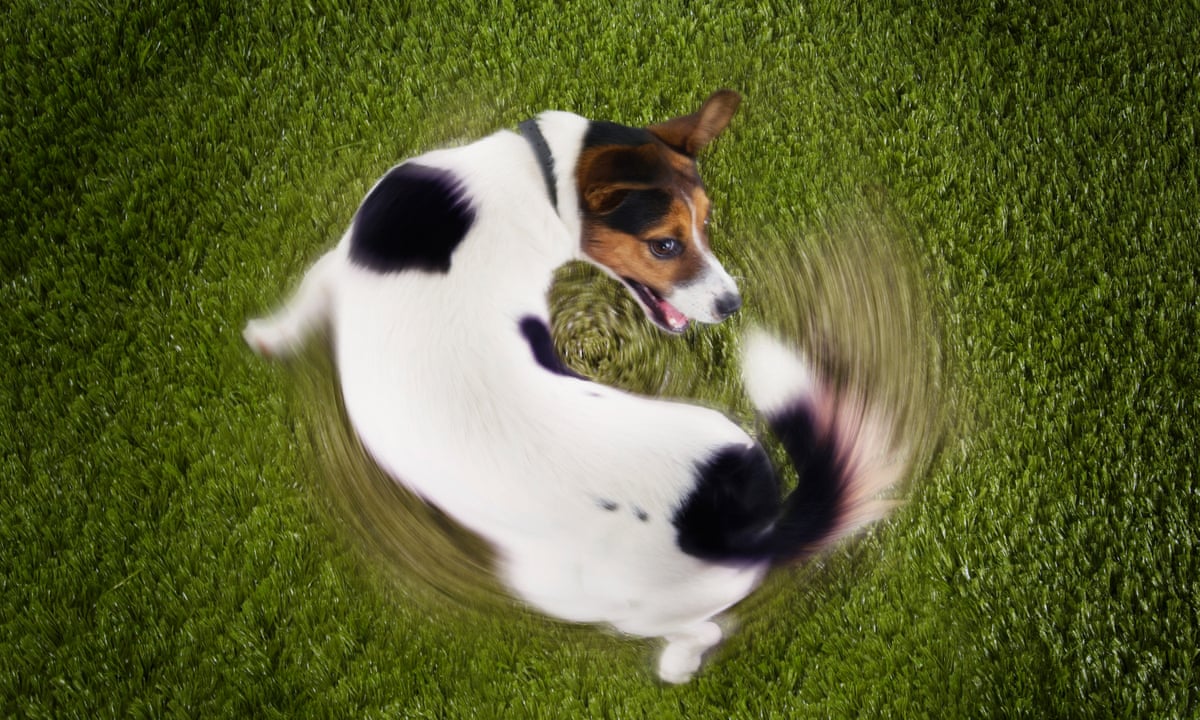
Being confined in small quarters where movement is restricted. When they dont they might resort to chasing their own tail.

Anon139984 January 6 2011.
What does it mean when a dog chases its own tail. People believe that tail chasing is an autistic behavior therefore they make the connection that vaccinations cause tail chasing which is not true If your dog is obsessively chasing his tail. Your dog may lick or chew their tail if theyre feeling anxious. This is especially common when new guests visit or during thunderstorms.
Trauma to the tail or spine. Although its not always. A dog might be chasing its tail for a number of reasons.
The most common and innocent reason is simply out of boredom. Dogs need to run and have fun. When they dont they might resort to chasing their own tail.
If your dog is compulsively chasing his tail he can cause serious damage by biting and chewing on it when he finally does catch it. Dogs have been known to experience hair loss on their tails due to this kind of behavior and even cause themselves injury. An obsessive dog suffering from separation anxiety may chase his tail to help calm himself while his owner is gone.
Or your dog may chase his tail when he feels overcome with anxiety when a stranger approaches the house or during a loud thunderstorm. There are several reasons that dogs chase their tails including. Being confined in small quarters where movement is restricted.
Boredom especially in older dogs. The presence of fleas or irritated anal glands. Dogs may appear to be chasing their tail when theyre actually trying to reach and scratch their butt.
Dogs sometimes need their anal glands expressed which can. However there are instances when tail chasing is not just harmless fun. In fact it is thought that for some dogs chasing their own tails becomes an obsessive compulsive behavior which is sometimes treated with anti-anxiety medication and therapy with an animal behaviorist.
So why does a dog begin to chase its tail in the first place. What Does It Mean When a Dog Chases Its Tail. She will lope around in circles attempting to grab her own tail.
Frequently she will make it. Meanwhile Billy who has merely a scrap of a tail as he was cropped when he was young will surely join in the chase. Limber tail syndrome or acute caudal myopathy is a disorder of the muscles in the tail.
This usually affects working dogs. Limber Tail syndrome is an injury occurring in sporting or working dogs. Common breeds include English Pointers English Setters Foxhounds Beagles and Labrador Retrievers.
When Sparky chases his tail you might laugh and think your puppy is spinning out of control. What you dont know is that youre reinforcing his behavior. Sure he might just be curious about that wiggly thing emerging from his bottom but sometimes his behavior is triggered by something else.
A dog chasing its tail may be a sign of a direr issue. Like humans dogs can suffer from a form of obsessive-compulsive disorder called canine compulsive di. My dog is crazy.
All he ever does is chase his tail. He will stop for a min and just start again. It is all he does if he isnt out having a walk.
Anon139984 January 6 2011. The only time my dog chases her tail is when she has a treat or food. It is real fluffy like a foxs tail.
One of the most common reasons for a dog biting or bothering their own tail is allergies or sensitivities that lead to hotspots on the skin which are sore inflamed and often itchy. The base of the tail is one of the most common areas for hotspots to develop which will often lead to your dog biting scratching or otherwise bothering this particular area which can of course make things worse. If you think that your pooch is chasing its tail because of boredom the behavior should subside after an increase in exercise.
For example if your dog chases their tail but then stops after you add another walk to their routine it was likely caused by boredom. Chasing out of boredom isnt necessarily a bad thing. Occasionally tail-chasing behavior is caused by a medical problem.
Discomfort in the tail lower back legs genitals or anus can cause enough irritation to make a dog spin around to try and chew or lick whatever hurts. In exceptionally rare cases neurological diseases such as epilepsy can cause tail-chasing behavior.